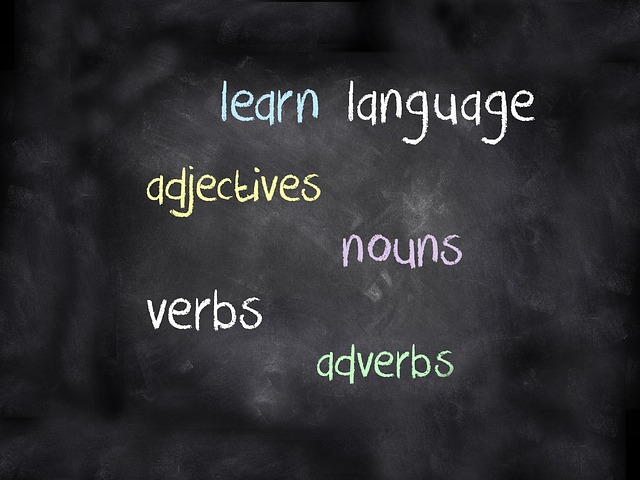Learning Dutch: Methods and Options
Learning a new language can open doors to new cultures, career opportunities, and personal growth. Dutch, spoken by over 24 million people worldwide, primarily in the Netherlands and Belgium, offers an accessible entry point for English speakers due to its Germanic roots. Whether you're relocating to the Netherlands, have Dutch heritage, or simply want to expand your linguistic horizons, there are numerous approaches to mastering this language. This article explores various Dutch learning methods, their effectiveness, costs, and how to integrate language learning into your busy life.

What are the ways to learn Dutch?
Dutch language learning comes in many formats, each with distinct advantages depending on your learning style and goals. Traditional classroom settings provide structured learning with immediate feedback from qualified instructors. These courses typically follow established curricula and offer regular practice with fellow students, creating an immersive environment.
Online platforms like Duolingo, Babbel, and Rosetta Stone offer flexibility with self-paced learning modules. These digital options use interactive exercises, audio clips, and gamification to maintain engagement. For those preferring personal attention without classroom constraints, one-on-one tutoring (either in-person or virtual) provides customized instruction tailored to specific needs and learning pace.
Immersion represents perhaps the most effective approach, whether through living in a Dutch-speaking region or creating a Dutch environment at home through media consumption, language exchange partners, and consistent practice in everyday situations.
What are the costs of online Dutch language courses?
Online Dutch courses vary significantly in price, reflecting differences in course structure, teaching methodology, and support levels. Free applications like Duolingo offer basic instruction without financial commitment, while premium services like Babbel charge subscription fees ranging from €6.95-€9.95 monthly, with discounts for longer commitments.
More comprehensive online schools such as Berlitz or EF (Education First) offer structured Dutch courses with professional instruction, typically ranging from €200-€500 for beginner-to-intermediate programs. University extension programs through institutions like Universiteit Leiden provide academically rigorous online Dutch courses priced between €300-€800 per level, depending on course duration and intensity.
| Provider | Course Type | Approximate Cost | Features |
|---|---|---|---|
| Duolingo | Self-guided app | Free (basic), €6.99/month (premium) | Gamified learning, basic grammar and vocabulary |
| Babbel | Structured online lessons | €6.95-€9.95/month | Conversation-focused, speech recognition |
| Rosetta Stone | Immersive language software | €11.99/month or €179/lifetime | Visual learning method, speech recognition |
| Berlitz | Instructor-led online classes | €300-€500 per level | Live teachers, small group sizes |
| NT2 Online | Specialized Dutch courses | €249-€499 per course | Integration exam preparation, cultural context |
Prices, rates, or cost estimates mentioned in this article are based on the latest available information but may change over time. Independent research is advised before making financial decisions.
The influence of Dutch when applying for a job
Proficiency in Dutch significantly enhances employment prospects in the Netherlands, even in environments where English is commonly spoken. Many Dutch companies, particularly those serving local markets, require Dutch language skills for client-facing positions. Government positions, healthcare roles, and education jobs almost universally demand Dutch fluency.
Even in multinational corporations where English serves as the working language, Dutch proficiency demonstrates commitment to integration and often becomes a differentiating factor between otherwise equally qualified candidates. According to research by the Dutch employment agency UWV, job seekers with Dutch language skills earn approximately 10-15% higher salaries in comparable positions than those without such skills.
Beyond formal requirements, Dutch language ability facilitates workplace social integration, cultural understanding, and professional networking—all crucial elements for career advancement. Many expatriates report that while they secured initial employment without Dutch skills, language proficiency became increasingly important for promotion opportunities.
How to find time to learn Dutch with a busy schedule?
Integrating Dutch study into a packed schedule requires strategic planning rather than extensive time blocks. The key lies in consistency over intensity—15-20 minutes daily yields better results than occasional longer sessions.
Leverage “dead time” during commutes, waiting periods, or exercise by listening to Dutch podcasts like “Dutch from the Start” or “Learn Dutch with Niels.” Mobile applications facilitate microlearning during brief breaks throughout the day. Language learning platforms like Memrise or Anki use spaced repetition systems, optimizing retention with minimal time investment.
Task-stacking proves particularly effective: attach Dutch practice to existing routines, such as listening to Dutch news while making breakfast or labeling household items with Dutch vocabulary. Setting specific, measurable goals maintains momentum—commit to learning five new words daily or completing one lesson weekly rather than vague intentions to “study Dutch.”
For busy professionals, lunch breaks present opportunities for language exchange with Dutch-speaking colleagues or quick review sessions. Weekend preparation can streamline weekday practice through preset lesson plans or vocabulary lists requiring minimal decision-making during hectic days.
Comparing independent learning with learning from a teacher or online resources
Independent learning offers unmatched flexibility and cost efficiency but demands strong self-discipline and motivation. Self-directed learners set their pace and focus on personally relevant content, often progressing quickly through areas of interest or prior knowledge. However, without external accountability, consistency frequently suffers, and pronunciation errors may go uncorrected.
Teacher-guided learning provides structure, expert guidance, and immediate feedback—particularly valuable for pronunciation and grammatical nuances. Instructors adapt material to learning styles and identify patterns in mistakes that self-learners might miss. This approach typically accelerates initial progress but comes with higher costs and scheduling constraints.
Online resources bridge these approaches, combining flexibility with structured learning paths. Interactive platforms offer pronunciation guidance through speech recognition technology while maintaining schedule adaptability. Community forums and virtual exchange partners supplement formal instruction with conversational practice.
The most effective approach often combines methods: structured courses for foundational learning, independent study for reinforcement, and conversation practice for practical application. Many successful Dutch learners begin with formal instruction to establish basics, transition to guided self-study, and maintain progress through regular interaction with native speakers.




